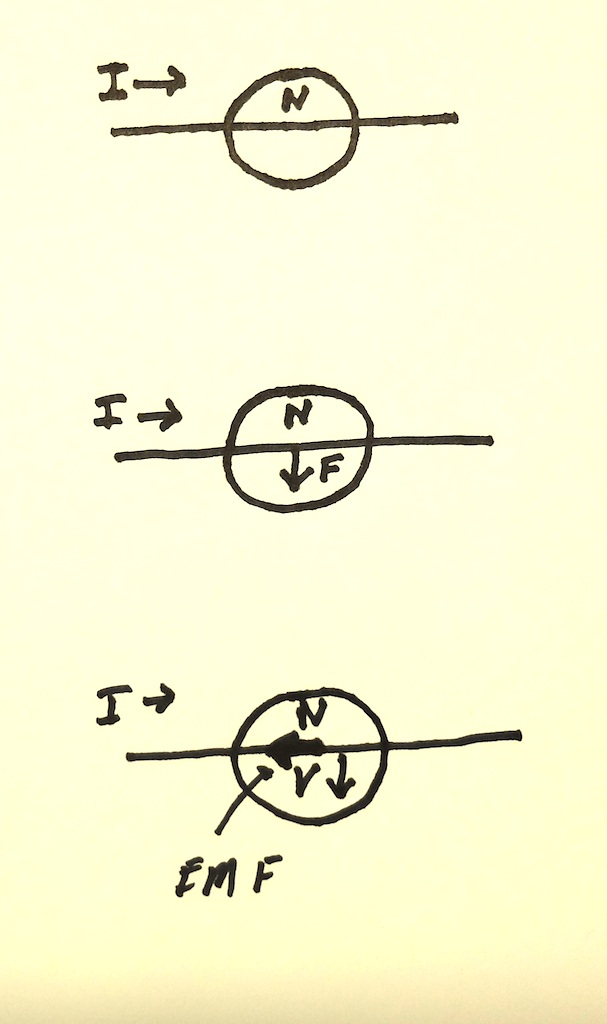Magnets exert forces on moving charges

A wire carrying a current over the north face of a magnet.
Magnets exert forces on moving charges

A wire carrying a current over the north face of a magnet.
Material
A right hand.
What's Going On?
Consider the conventional current I in a wire. The conventional current is the flow of positive charges in a wire that carries the same current as whatever actual charge moves in the wire.(Usually the real source of the current are electrons flowing opposite the conventional current.)
Magnetic field lines are directed out of the north face of the magnet.
The right-hand-rule gives the force F on the wire.
(Place your extended thumb in the direction of the conventional current I, the extended fingers in the direction of the magnetic field, and your palm gives you the direction of the force.)
This wire is actually a wire inside a motor. The force causes the wire to accelerate and acquire a velocity, v, in the direction of the force.
Now consider the positive charges in the wire, and assume the myth that the positive charges can move within the wire.
The wire is moving the positive charges with velocity v. The right-hand-rule indicates there is a force on these moving charges, a force in the direction of the bold arrow, this force opposes the force on the charges delivered by the voltage of battery. This force is called an electromagnetic force or EMF and since it opposes the battery force it is called a back EMF. The back EMF reduces the current through the wire in a spinning motor just as a resistance would.
The back EMF only exists when the motor is spinning, it goes away when the motor stops, and this allows the current driven by the battery to increase.
(Note: You can do this all with electron current and moving electrons but you have to use the left-hand-rule.)
Scientific Explorations with Paul Doherty |
7 August 2015 |